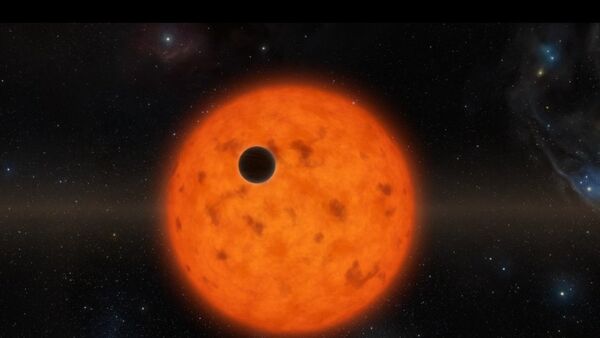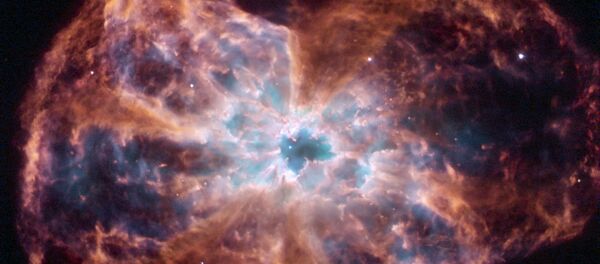In April, the Atacama Large Millimeter/submillimeter Array (ALMA) in Chile detected an infant exoplanet orbiting TW Hydrae, a star 190 light-years from Earth. Intrigued by the prospect of discovering an young Earth-like planet around a similarly young star, a team of astronomers led by John Debes of the Space Telescope Science Institute in Baltimore, Maryland, studied spectrographic information gathered by the Hubble Telescope.
What they found is a shadow within the debris disk that surrounds TW Hydrae. Originally believed to be part of the debris disk, researchers have found that the shadow was moving too fast for that to be the case. The most likely culprit behind the shadow would be a planet.
"This is the very first disk where we have so many images over such a long period of time, therefore allowing us to see this interesting effect," said Debes, who presented his team's findings at a meeting of the American Astronomical Society. "That gives us hope that this shadow phenomenon may be fairly common in young stellar systems."
TW Hydrae is similar to the Sun, but much younger. While the Sun is 4.6 billion years old, TW Hydrae is extremely young, at only 5-10 million years. Astronomers believe TW Hydrae to be almost identical to our Sun as it was when a young star, including the disk of debris around it that astronomers believe once also surrounded the Sun and now makes up most of the planets and other celestial bodies orbiting the Sun.
There are numerous theories as to how planets form, but no scientific consensus as to which is correct. The prevailing theory, the nebular hypothesis, states that planets develop alongside their star when a cloud of dust and gas known as a nebula collapses. The center of the collapsed nebula becomes a massive star while the remainder becomes planets who are then trapped in the new star's orbit. TW Hydrae is so young that its debris disk has not yet developed into planets.
Many specifics of this process are shrouded in mystery, and astronomers are highly interested in the study of young stars and planets, in hopes that their observations will shed light on the process. TW Hydrae seems a perfect subject to investigate for this purpose.
A possible planet in a nearby stellar system may be betraying its presence in a unique way!
— Hubble (@NASA_Hubble) January 9, 2017
READ: https://t.co/XrpvZnfNOD pic.twitter.com/pDAgeEiRly
Being much smaller and darker than stars, planets are difficult for astronomers to spot. This problem is compounded when planets are close to their stars, as the starlight obscures the planet in most cases. Earth-like planets are typically close to their stars, so researchers are seeking better methods of detection, such as more powerful telescopes.




